The Hokuriku region, located in central Honshu, consists of three prefectures: Ishikawa, famous for Kenrokuen Garden and Kaga Onsen; Fukui, home to Tojinbo and Echizen crabs; and Toyama, renowned for the Tateyama Kurobe Alpine Route. Facing the Sea of Japan, the region is renowned for its freshly caught seafood, including Echizen crabs.
Travel to these northern-central Japan destinations from Tokyo via the JR Hokuriku Shinkansen in approximately 2 to 3 hours. Why not start a journey to explore the region's tourist spots, natural landscapes, and delicious seafood?
💡If you want to travel around the Hokuriku region at a great value, we recommend the "Hokuriku Arch Pass"! This pass allows unlimited travel for 7 days on designated railway lines, including the Hokuriku Shinkansen.
You can purchase it here:
※All foreign tourists visiting Japan for tourism purposes with a "short-term stay" entry status can purchase the JR Pass.Those with a Japanese passport are not eligible to use the JR Pass.
※The information featured in this article is as of May 2024. Please check the official website or other sources for the latest information.
※If you purchase or reserve the products introduced in this article, a portion of the sales may be returned to FUN! JAPAN.
The JR Hokuriku Shinkansen, connecting Tokyo and the Hokuriku region, features the premium "Gran Class" seats.
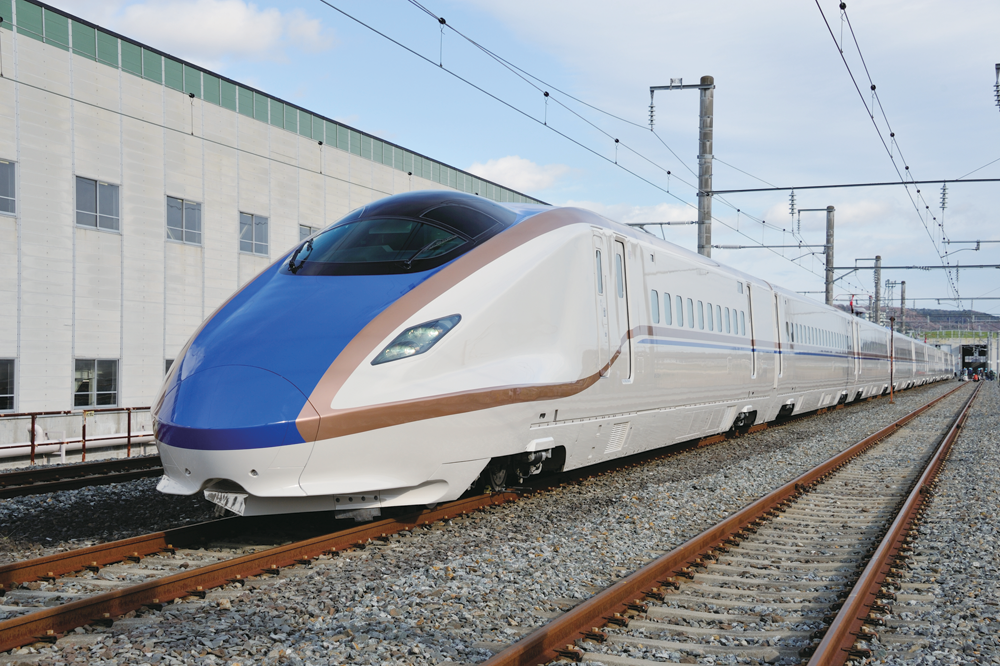
Starting from Tokyo Station, the Hokuriku Shinkansen runs directly to the Hokuriku region, passing through major cities such as Nagano, Toyama, Kanazawa, and Fukui. Currently, there are 10 stops between Kurobe-Unazuki Onsen Station and Tsuruga Station, allowing for a seamless journey between Tokyo and the three prefectures of the Hokuriku region.
Departing from Tokyo Station, the travel time is as short as 2 hours and 25 minutes to Kanazawa Station and 2 hours and 51 minutes to Fukui Station, making it a convenient means of transportation from the Kanto region to the Hokuriku region.
The train cars are designed with the concept of "the future of Japan", and by combining the form for high-speed driving and traditional Japanese colors, they express the speed and sharpness by integrating the scenery along the Shinkansen route. The sky color represents the blue sky spread along the Hokuriku Shinkansen route, the ivory white represents the Japanese elegance and calmness, and the copper color represents the Japanese traditional crafts such as copperware and inlay.

The interior design varies by car type, including Green Cars and Ordinary Cars. Particularly noteworthy is Car No. 12, which houses the top-tier "Gran Class." The interior, featuring wood grain and metallic finishes, offers 18 spacious seats. These seats are designed for ultimate comfort and can recline up to 45 degrees using a control panel.
Another key feature of the Gran Class is the dedicated Gran Class attendants (*1) who will greet you. Upon boarding, passengers receive a welcome set with water and snacks. During the journey, the attendants provide light meals and beverages, offering hospitality that earns the Gran Class the nickname "First Class of the Shinkansen."
*1: The in-car service by the Gran Class Attendant is only available in the Gran Class of the "Kagayaki" running between Tokyo and Kanazawa-Tsuruga. The "Hakutaka", "Asama" and "Tsurugi" trains do not have a Gran Class Attendant on board and do not provide in-car services. In addition, in addition to the fare and express charge, a separate Gran Class charge is also required.
- For more details about Gran Class: https://www.jreast.co.jp/granclass/
Hokuriku Shinkansen Route Map: Travel Times and Fares to Major Stations
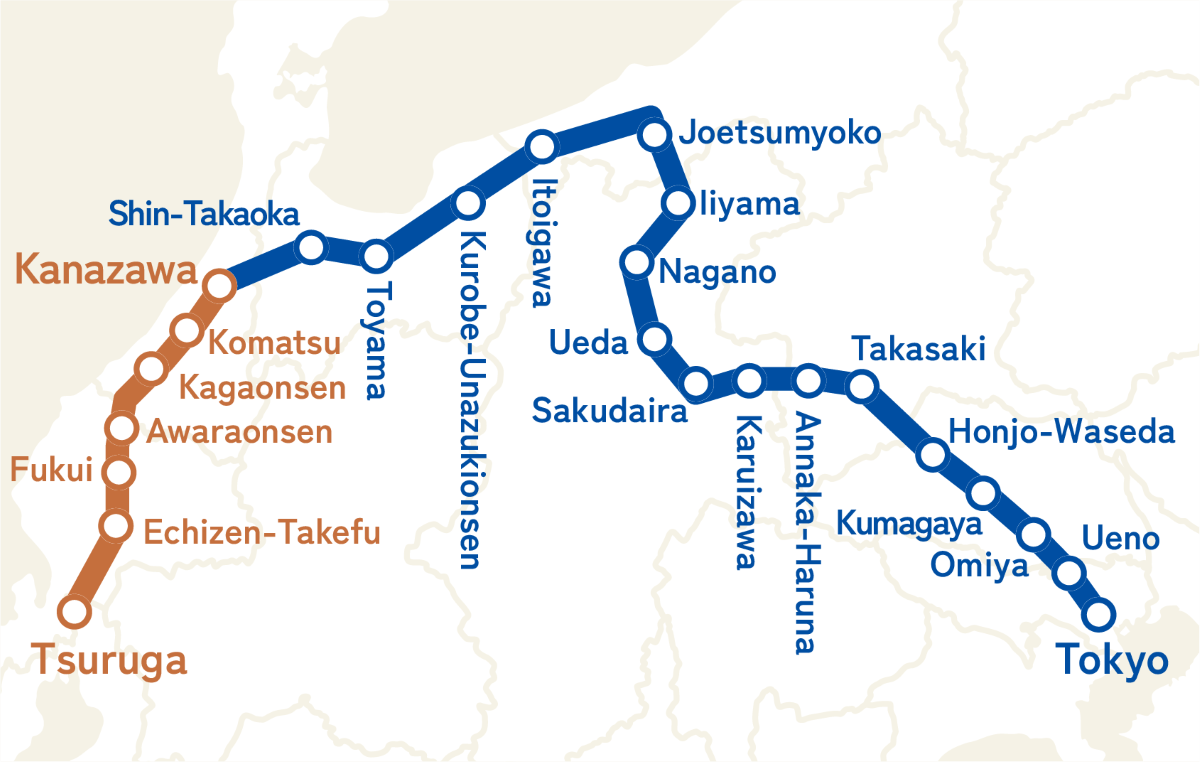
The Hokuriku Shinkansen operates four types of trains: "Kagayaki", "Hakutaka", "Tsurugi", and "Asama". Each type has different characteristics, from the stations they stop at to the travel time to the destination, so it's important to check before departure.
What are the differences between the Hokuriku Shinkansen "Kagayaki", "Hakutaka", "Tsurugi", and "Asama"?
| Type | Kagayaki | Hakutaka | Tsurugi | Asama |
| Features | ・The fastest train that only stops at major stations in each prefecture ・All cars are reserved seats ・In-car service by Grand Class attendant available (*2) | ・Stops at almost all stations between Nagano and Tsuruga ・Some cars have non-reserved seats (varies by train) | ・Train that transports within the three prefectures of Hokuriku between Toyama Station and Tsuruga Station ・Most trains connect with the "Thunderbird" limited express from Osaka and the "Shirasagi" limited express from Nagoya ・Some cars have non-reserved seats (varies by operating day) | ・Train that operates between Tokyo Station and Nagano Station ・Some cars have non-reserved seats (varies by train) |
| Main operating sections | Tokyo Station to Tsuruga Station or Kanazawa Station | Tokyo Station to Tsuruga Station or Kanazawa Station, Nagano Station to Kanazawa Station | Toyama Station to Tsuruga Station | Tokyo Station to Nagano Station |
| Main stops (*3) | Ueno Station, Nagano Station, Toyama Station, | In addition to the above, Karuizawa Station, Stations between Kurobe-Unazuki Onsen Station and Tsuruga Station, among others | Stations between Toyama Station and Tsuruga Station (the train may pass through some stations) | Stations between Tokyo Station and Nagano Station (the train may pass through some stations) |
*2: Some special trains may not offer onboard service by Grand Class attendants (no beverages or light meals).
*3: Some trains may not stop at certain stations. Please check the official website for the timetable for details
1. Non-reserved seat
2. Reserved seat
3. Green car
1. 12,430 yen
2. 12,960 yen
3. 19,420 yen
1. 13,850 yen
2. 14,380 yen
3. 20,840 yen
1. 15,280 yen
2. 15,810 yen
3. 23,660 yen
*4: The total fare and charges for one adult using during the normal period. The fare is reduced by 200 yen during the off-peak period, increased by 200 yen during the busy period, and increased by 400 yen during the peak period. (Excluding non-reserved express charges)
Recommended tourist spots and activities in the Hokuriku region you might want to visit by Hokuriku Shinkansen
The Hokuriku region, comprising the three prefectures of Toyama, Ishikawa, and Fukui, offers numerous attractions. Here, we introduce recommended spots and activities by prefecture, ensuring they are easily accessible within a 15-minute walk or bus ride from the terminal stations for convenience, especially for rail travelers.
【Toyama Prefecture】3 recommended sightseeing spots & activities within walking distance from Toyama Station
Toyama Prefecture is nestled between the 3,000-meter peaks of the Tateyama Mountain Range and the fish-rich Toyama Bay. You can enjoy the seasonal beauty of Toyama without venturing into the mountains, right from the urban center of Toyama City. Here are some tourist spots near Toyama Station that you can enjoy even with a short visit.
1. Fugan Canal Kansui Park
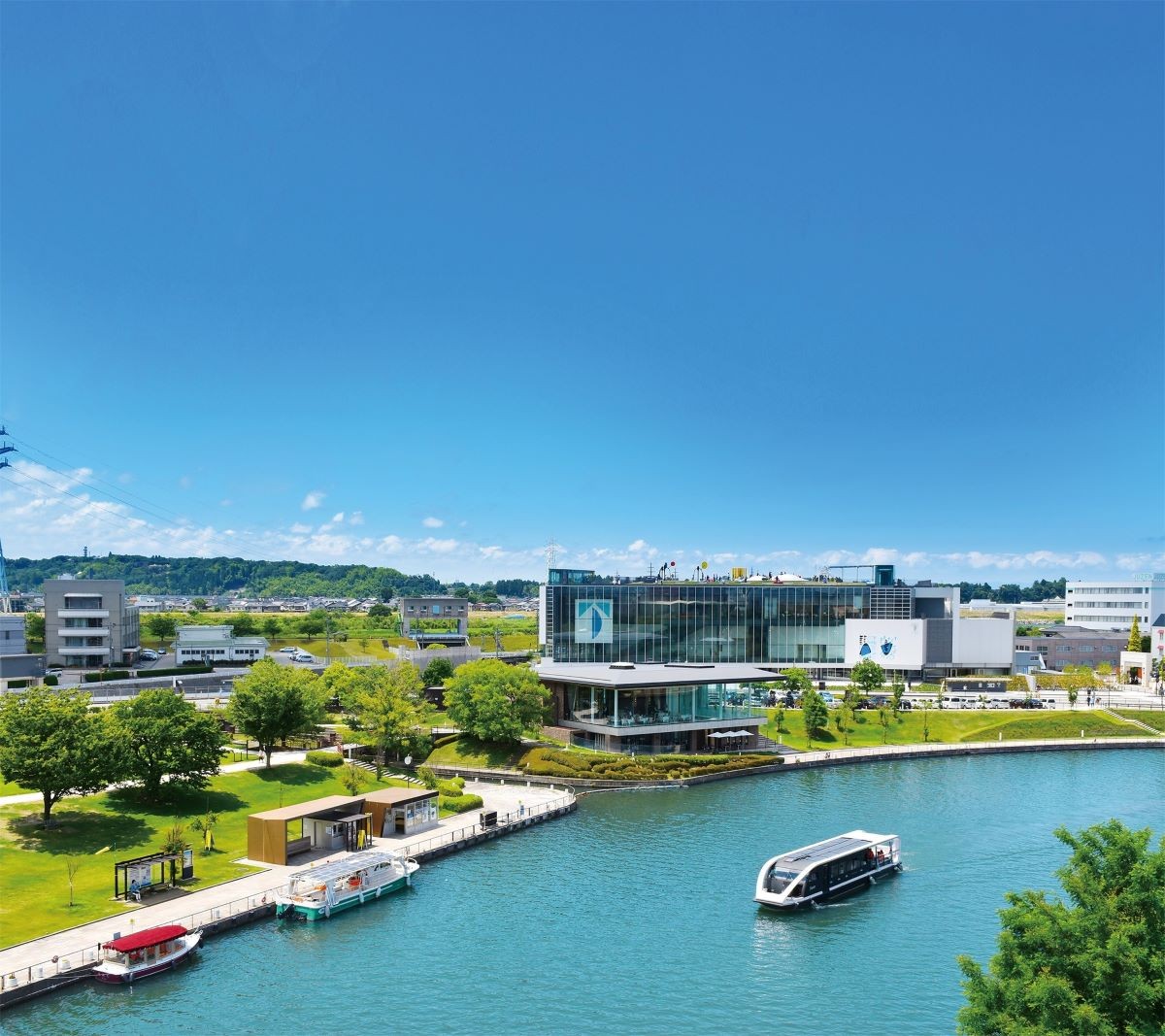
The Fugan Canal Kansui Park, which spans 9.7 hectares, is filled with lawns and canals. It offers stunning seasonal views, including cherry blossoms in spring and vibrant autumn foliage. The park is also known for its seasonal lighting displays that change colors throughout the year. From spring to autumn, you can enjoy canal cruises as well.
The "Starbucks Coffee Toyama Kansui Park Store" located in the park won the "Best Store Design Award" in 2008 and is also known as "the most beautiful Starbucks in the world".
- Address: Minato Irifune-cho, Toyama City
- Access: About 9 minutes walk from JR "Toyama Station"
- Official Website: http://www.kansui-park.jp/
2. Toyama Chihou Railway City Tram (Streetcar)
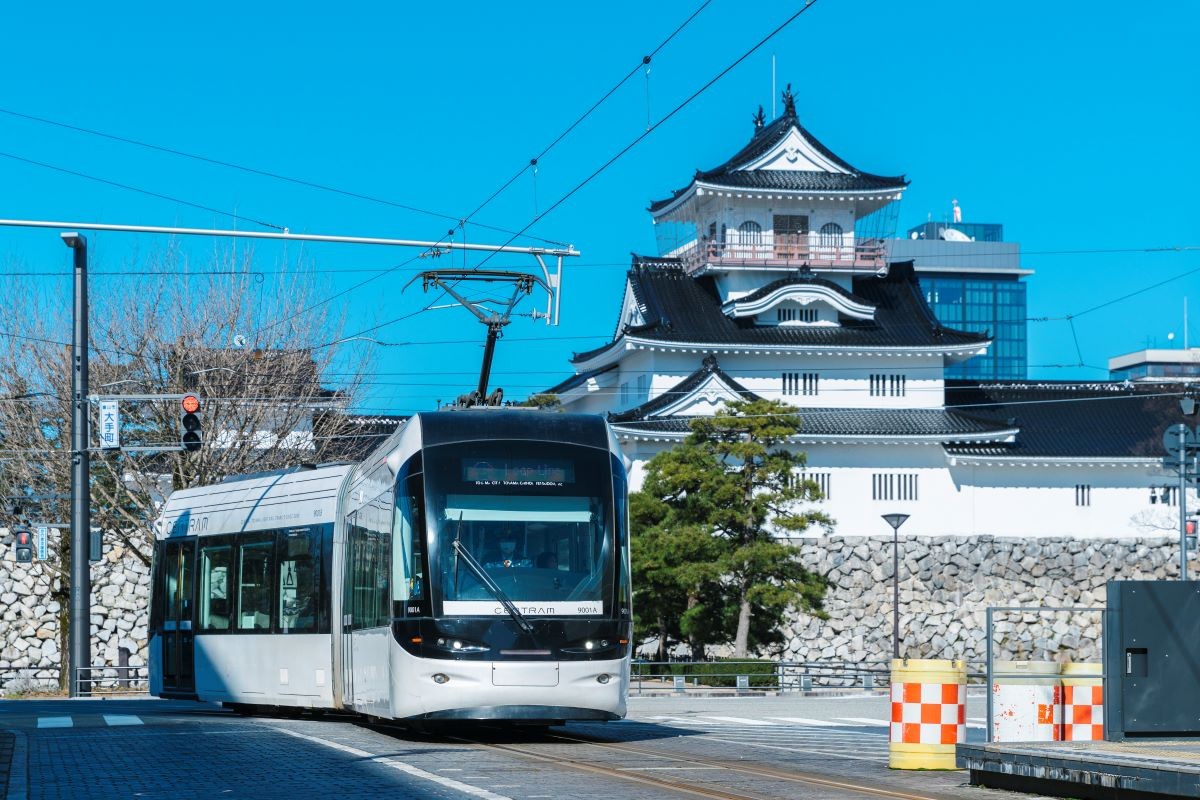
Running through the heart of Toyama City, the Toyama Chihou Railway’s streetcar is a convenient and scenic way to explore the city. Highly recommended is the loop line that circles around Toyama Station and the central city area. The entire circuit takes about 28 minutes, offering views of the Tateyama Mountain Range and opportunities to capture photos of the tram with Toyama Castle in the background.
- Fare: Adults 210 yen, Children 110 yen
- Official Website: https://www.chitetsu.co.jp/
3. Matsukawa・Matsukawa River Cruise
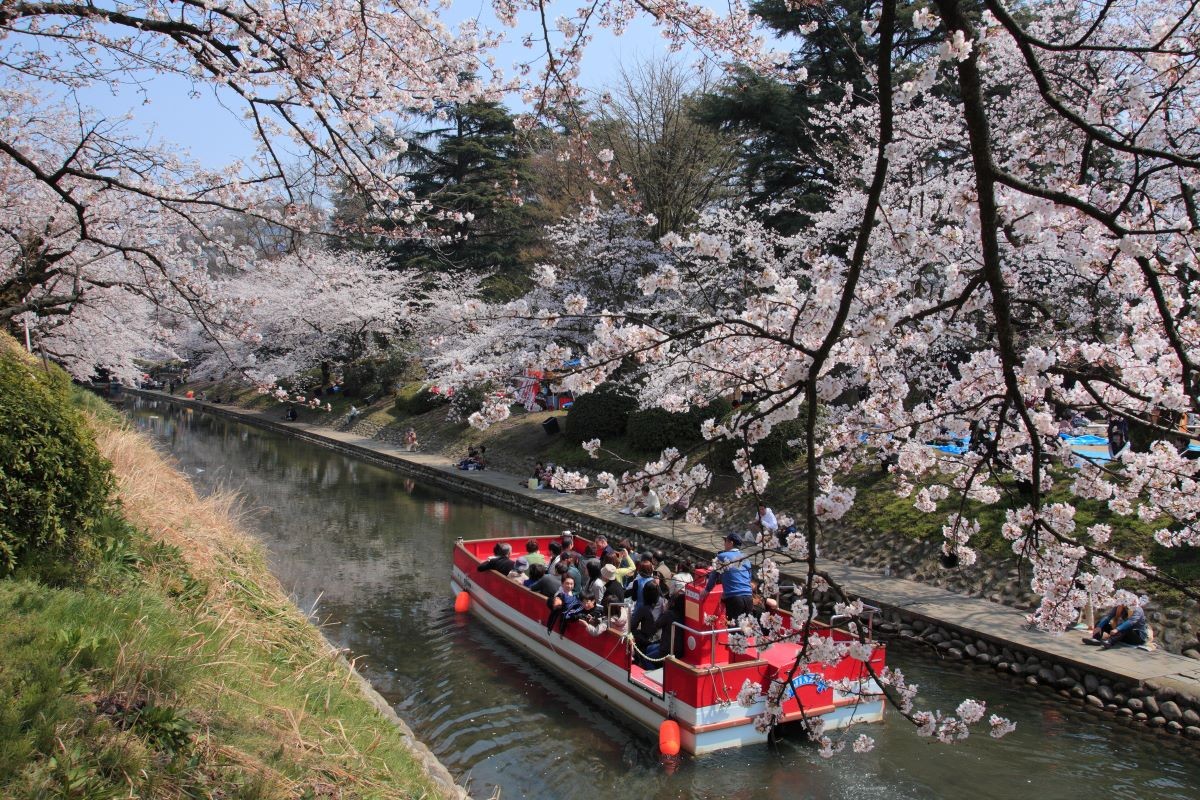
© Toyama Tourism Promotion Organization
Matsukawa River, flowing near Toyama Castle Park, retains an atmosphere reminiscent of the Edo period and is famous for its cherry blossoms. The Matsukawa River Cruise, which takes about 30 minutes, allows you to experience the history and enjoy the changing scenery of each season, from cherry blossom tunnels in spring to lush greenery in summer and vibrant autumn foliage.
- Address: 1-34 Honmaru, Toyama City
- Regular fee: Adults 1,800 yen, Children 900 yen
- Access: About 10 minutes walk from JR "Toyama Station"
- Official website: https://matsukawa-cruise.jp/
▶For sightseeing in Toyama, click here:
👉Recommended Leisure Activities, Experiences, and Sightseeing in Toyama
【Ishikawa Prefecture】3 Recommended Tourist Spots & Activities within Walking Distance from Kanazawa Station
Ishikawa Prefecture is rich in spots that exude the atmosphere of the Edo period, such as old townscapes and gardens designated as cultural properties. From Kanazawa Station, which is served by the Hokuriku Shinkansen, you can reach most of the tourist attractions in Kanazawa city on foot or by bus. We have collected spots where you can enjoy traditional culture and the changing scenery of the four seasons at once.
1. Tsuzumi-mon Gate
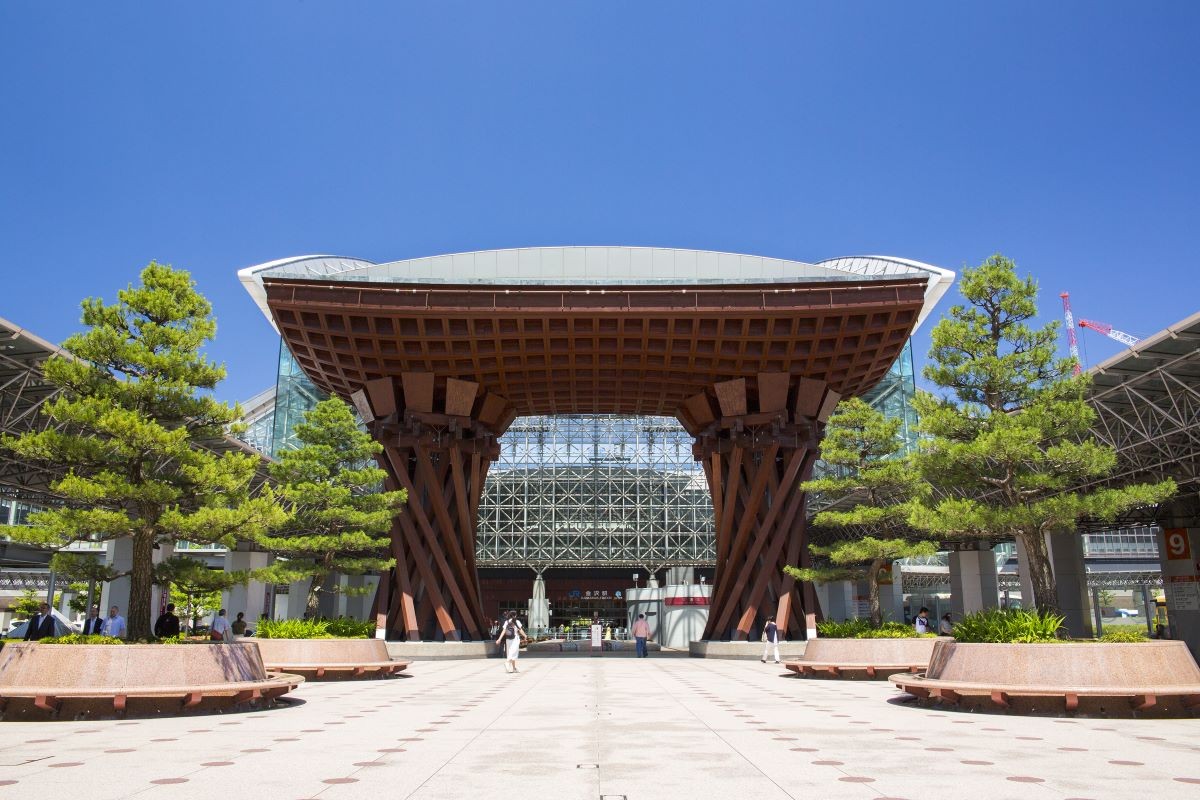
From a stylish townhouse cafe with cobblestones and the atmosphere of the Edo period, to souvenir shops selling traditional crafts, and kappo restaurants, Higashi Chaya District is lined with various establishments. Enjoy the atmosphere of the old townscape, which has been selected as an Important Traditional Buildings Preservation District, while enjoying gourmet food, shopping, and experiences such as tea ceremony and gold leaf pasting.
- Address: 1-1 Kinoshinbo-machi, Kanazawa City
- Access: A short walk from JR Kanazawa Station
- Official Website: https://www4.city.kanazawa.lg.jp/index.html
2. Higashi Chaya District
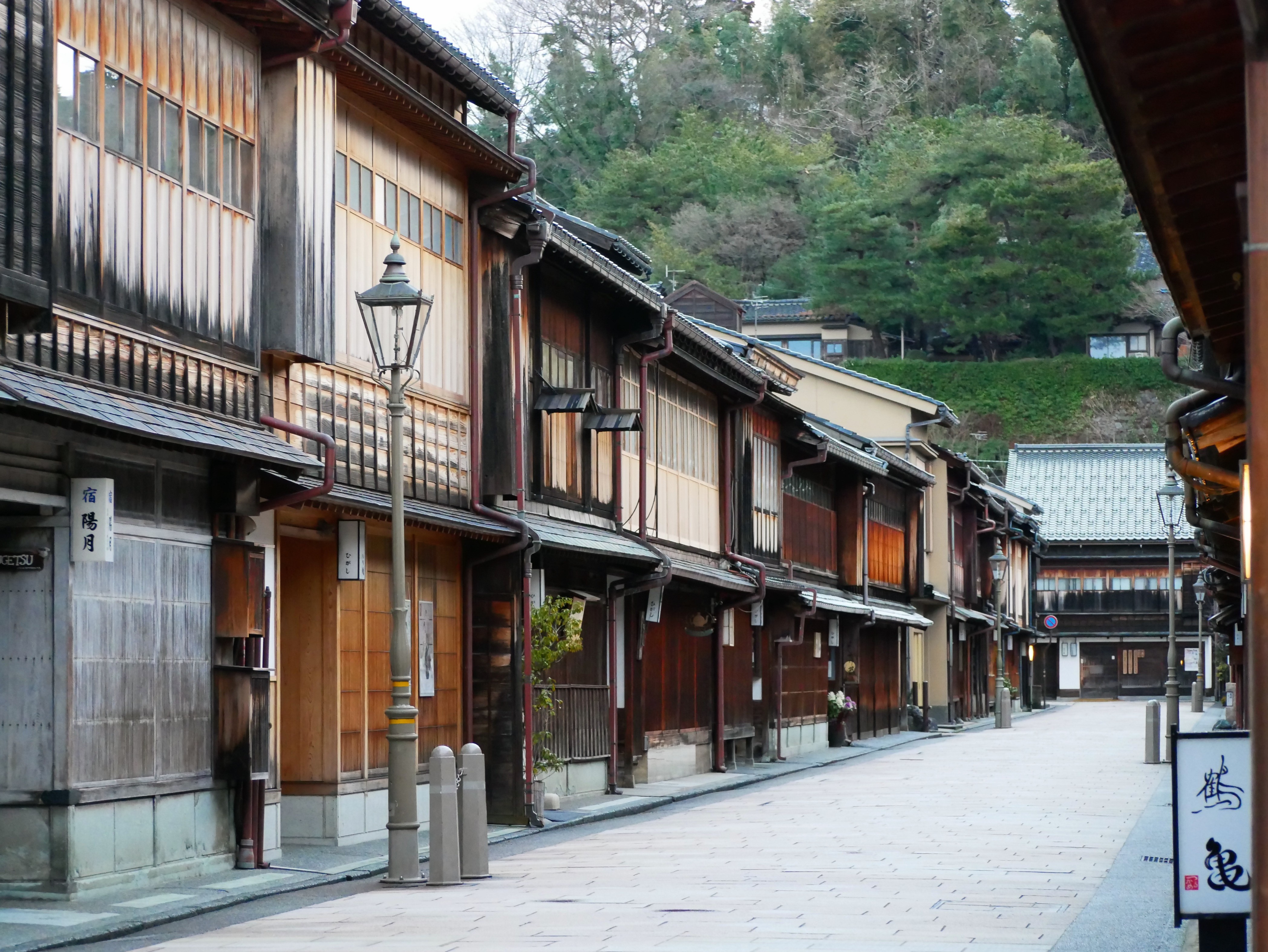
Higashi Chaya District, with its cobblestone streets and Edo-period atmosphere, is lined with stylish machiya cafes, souvenir shops selling traditional crafts, and kaiseki restaurants. Designated as an Important Preservation District for Groups of Traditional Buildings by the Japanese government, you can enjoy the old-town ambiance while indulging in gourmet food, shopping, and experiencing tea ceremonies or gold leaf application.
- Address: Higashiyama, Kanazawa City
- Access: About a 7-minute ride from JR Kanazawa Station on the Hokuriku Railroad bus, Hokuriku Railroad Kanazawa Loop Bus, or West Japan JR bus, followed by a 5-minute walk from the Hashibacho bus stop.
- Official Website: https://chayagai.goldleaf-sakuda.jp/
3. Kanazawa Castle Park & Kanazawa Castle Ruins
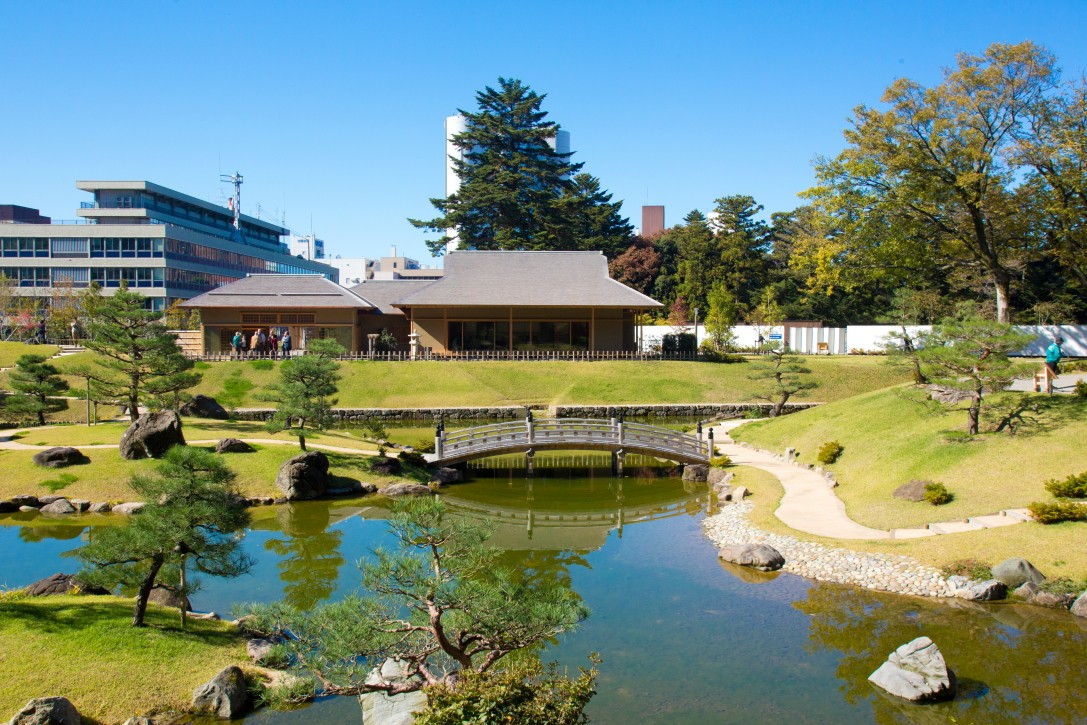
Kanazawa Castle Park, home to the nationally designated historic site of Kanazawa Castle Ruins, boasts numerous important cultural properties from the Edo period that still remain. The park is full of historical and cultural attractions.
Adjacent to the park is Kenrokuen, one of Japan's Three Great Gardens. If time permits, be sure to visit both sites for a comprehensive experience.
*Due to the damage to the stone walls caused by the Noto Peninsula earthquake in 2024, there are restrictions on entering some areas of the park.
- Address: 1-1 Marunouchi, Kanazawa City
- Business hours:
- [March 1st to October 15th] 07:00~18:00
- [October 16th to end of February] 08:00~17:00
- Access: About 15 minutes by Hokuriku Railway bus, Hokuriku Railway Kanazawa Castle Town Tour Bus or Kenrokuen Shuttle from JR "Kanazawa Station", about 5 minutes walk from "Kenrokuen/Kanazawa Castle" bus stop
- Official website: https://www.pref.ishikawa.jp/siro-niwa/kanazawajou/
▶For sightseeing in Kanazawa, click here:
👉 Kanazawa City: Bunka no Mori Odekake Pass | Japan
【Fukui Prefecture】3 Recommended Tourist Spots & Activities within Walking Distance from Fukui Station
Fukui Prefecture is filled with the charms of travel, including scenic landscapes surrounded by sea and mountains, rich history, culture, and hot springs. Centered around Fukui Station, the area showcases the distinct beauty of nature across the seasons.
1. Fukui Station West Exit Square (Dinosaur Square)
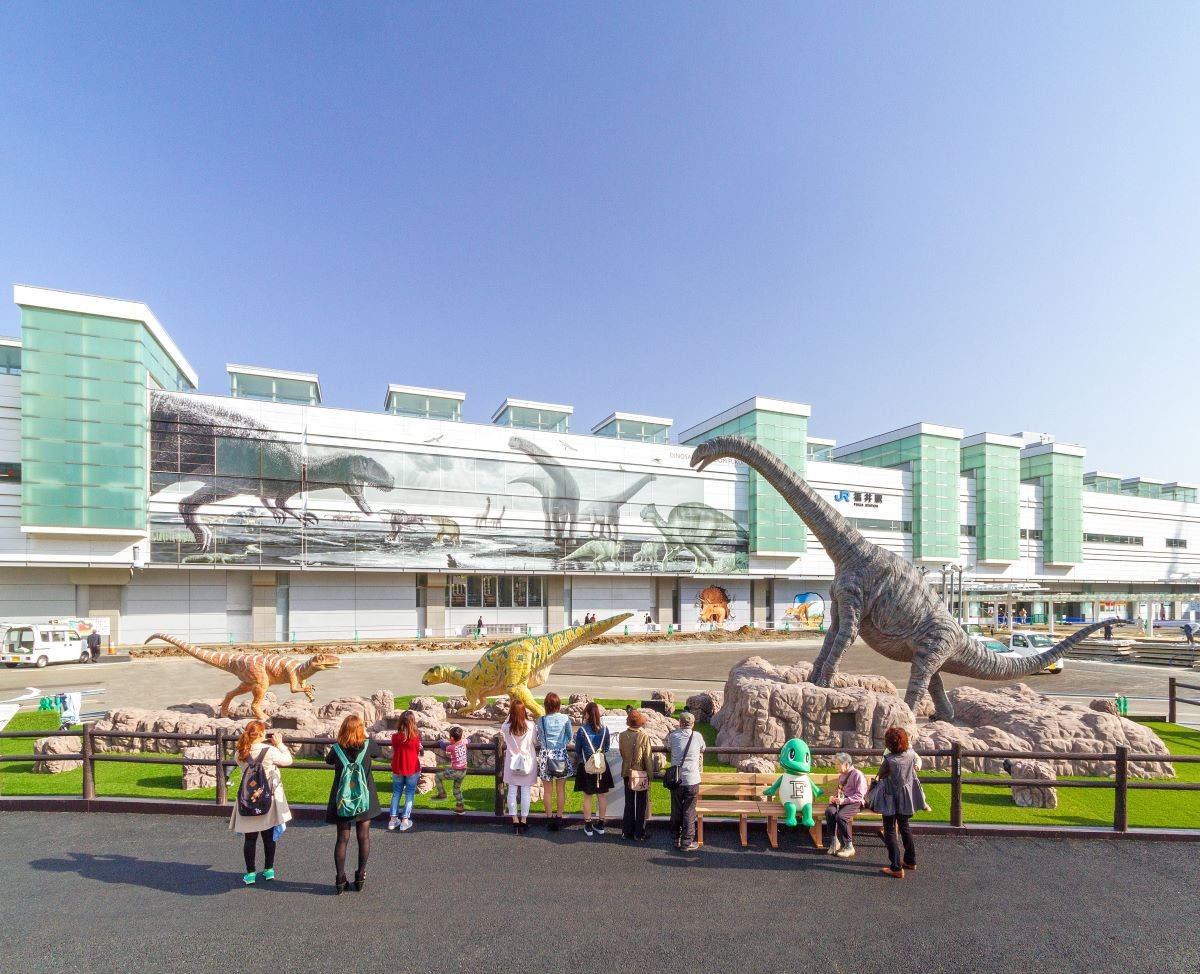
Once you step out of Fukui Station, you enter a world of dinosaurs. A 12-meter-long Tyrannosaurus roaring with its mouth open, and three life-sized dinosaur monuments that once inhabited Fukui, welcome you at the West Exit Station Square. Don't miss the trick art of dinosaurs popping out from a nearby wall.
2. Fukui Castle Ruins
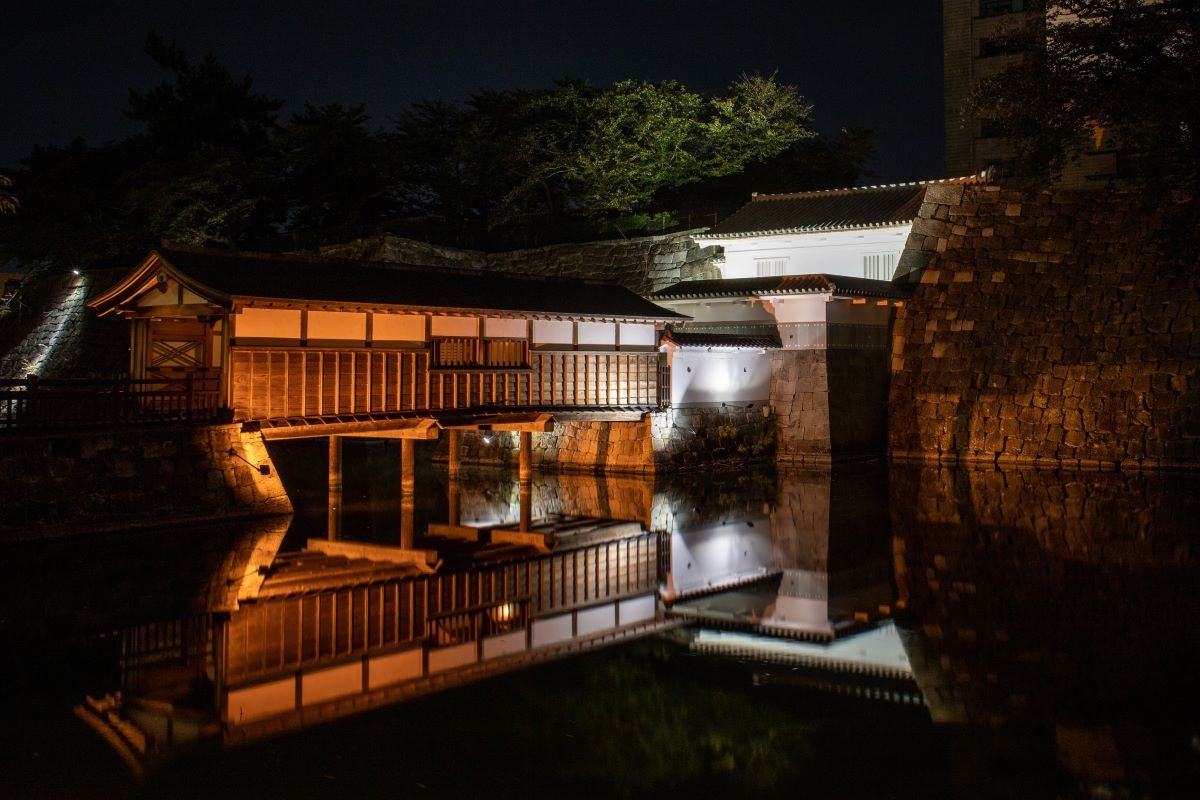
Fukui Castle, built by Yuki Hideyasu, the second son of Tokugawa Ieyasu who opened the Edo Shogunate. The castle tower was destroyed by a large fire, and now only the stone walls and part of the moat remain almost as they were at that time. The castle is lit up at night in colors associated with the season. The stone walls floating in the light make you feel the weight of more than 400 years.
3. Scenic Spot Yokokan Garden
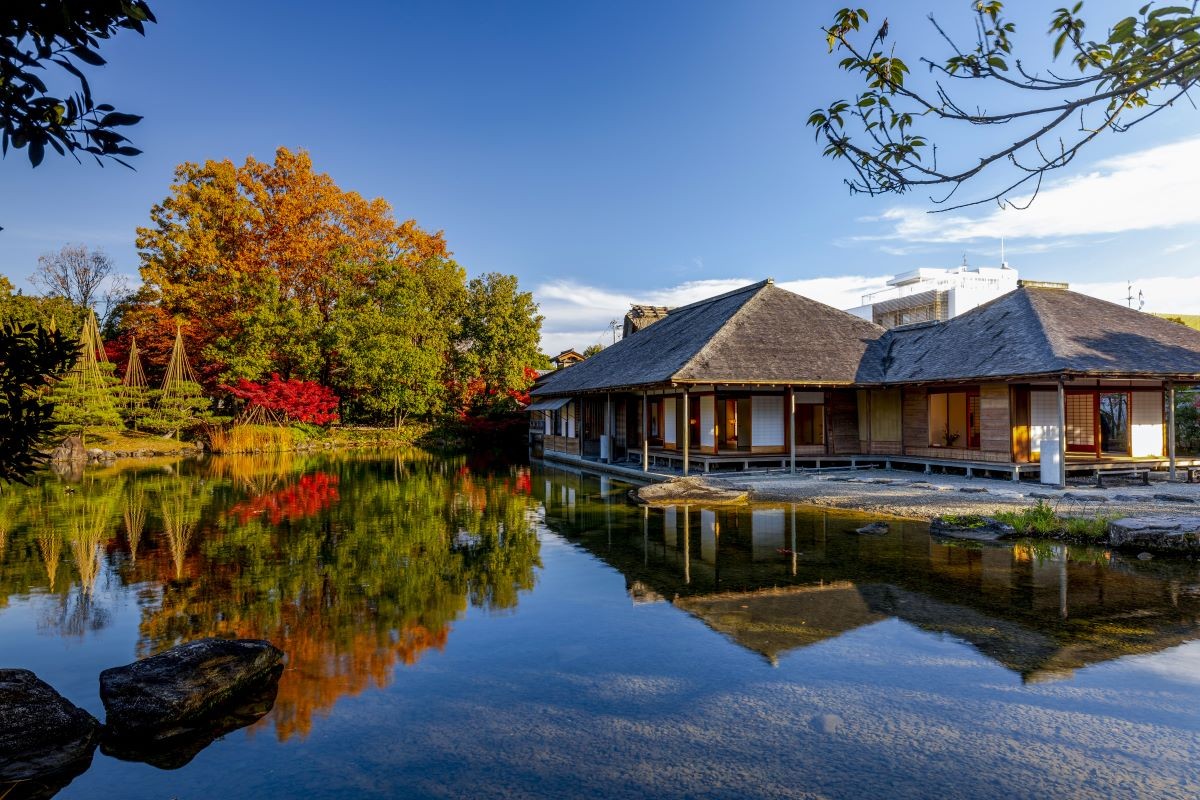
The "Yokokan Garden", which was created in the Edo period and is designated as a national scenic spot. It is a stroll-style garden where you can appreciate the garden from various angles, with a large pond in the center and a sukiya-style building that seems to float on the pond. In the "Japanese Garden Ranking" conducted by the American Japanese garden specialty magazine "Sukiya Living Magazine" targeting about 1,000 Japanese gardens, it has been selected in the top 10 for 17 consecutive years.
- Address: 3-11-36, Houei, Fukui City
- Access: About 15 minutes walk from JR "Fukui Station"
- Official Website: http://www.fukuisan.jp/ja/yokokan/
▶For Fukui tourism, click here:
👉 Have Fun in FUKUI Pass (1 Week Free Pass)
Travel around the Hokuriku region affordably with the "Hokuriku Arch Pass"!
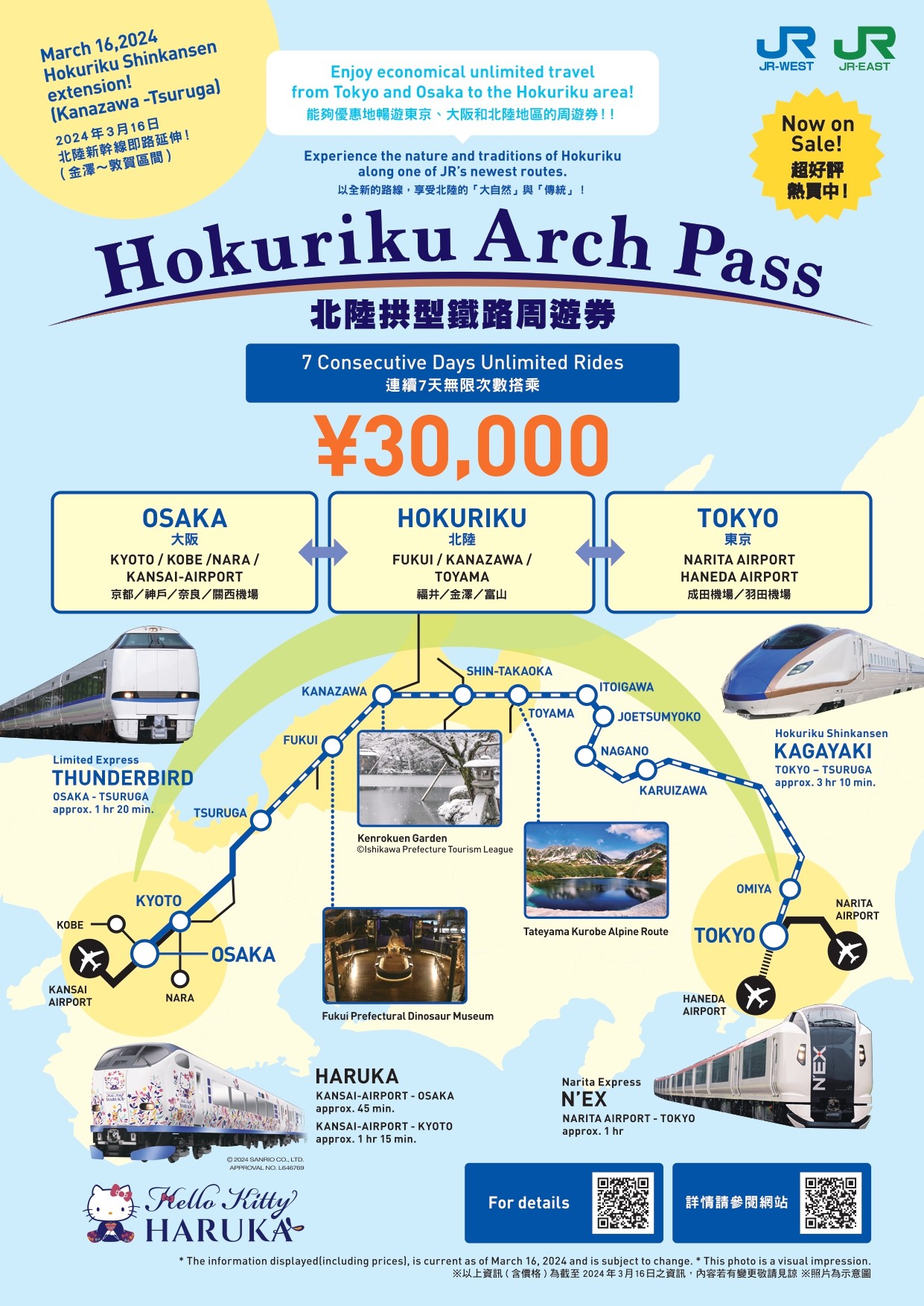
If you want to travel around the Hokuriku region at a great value, we recommend the "Hokuriku Arch Pass". This rail pass allows only short-term tourists to get on and off the eligible trains within the available area.
With this ticket, not only can you ride the Hokuriku Shinkansen, which connects Tokyo with the three prefectures of Hokuriku, but you can also ride the limited express and local trains operating within the Hokuriku area, as well as the eligible trains in the Kansai region, including Osaka and Kyoto, for seven consecutive days (*54). It's perfect for those who want to travel around multiple areas, as it easily pays for itself with just a round trip for one adult on the Narita Express (Narita Airport to Tokyo Station) & Hokuriku Shinkansen (Tokyo Station to Kanazawa Station)!
*5: Additional charges apply for some trains. Please check the official website for other notes on use
- Selling price: Adults 30,000 yen, Children 15,000 yen
- Purchase location: Internet reservation (JR-WEST ONLINE TRAIN RESERVATION, JR-EAST Train Reservation), travel agencies outside Japan, etc.
- Official website: https://www.westjr.co.jp/global/en/ticket/hokuriku-arch-pass/
💡Purchase your "Hokuriku Arch Pass" here:
※All foreign tourists visiting Japan for tourism purposes with a "short-term stay" entry status can purchase the JR Pass.Those with a Japanese passport are not eligible to use the JR Pass.




Comments